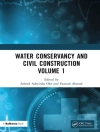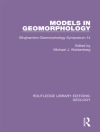This book covers the fundamentals, limitations, and challenges of phytoremediation in contaminated water, air, and soil due to rapid demographic and industrial development. This foundational knowledge is necessary to combat negative impacts on human and environmental health brought on by practices such as ore mining, gas emission, pesticide application, and municipal waste generation. The book explains the phytoremediation of organic and inorganic pollutants via different types of microbes, fungi, and various plant groups to improve the quality of contaminated systems, and discusses emerging advancements and technologies, such as nanotechnology, for reducing toxic pollution. The mechanisms of phytoremediation are a primary point of focus to understand the basics, and for readers to apply this knowledge in a variety of contexts where phytoremediation is a useful tool in improving the quality of polluted water, air, and soil. The book is mainly intended for researchers in the fields of botany, agriculture, biotechnology, and environmental engineering, but will also be of interest to policymakers, NGOs, and academics working on environmental management.
Jadual kandungan
1. Chronicle of the fundamentals and developments of phytoremediation on a historical scale.- 2. Mechanism of various types of phytoremediation techniques and their suitability for different purposes.- 3. Bioavailability of pollutants and phytoremediation efficiency.-4. Limitations and challenges in phytoremediation.-5. Molecular approaches to phytoremediation.-6. Phytoremediation of chemical pollutants and toxic metals by bacteria and PGPRs (plant-growth-promoting rhizobacteria (PGPR) .-7. Phytoremediation of pollutants using Fungi.-8. Phytoremediation of pollutants by Algae and Hydrophytes.-9. Phytoremediation of Chemical Pollutants and Heavy Metals by Higher Terrestrial Plants.-10. Phytoremediation potential of pollutant-degrading endophytes.-11. Removal of contaminants through Phytoremediation from soil.-Phytoremediation techniques are used to degrade and remove various type of pollutants from.-12. Phytoremediation to remove contaminants from water.-13. Removal of toxic chemicals from Air through Phytoremediation.-14. Application of nanotechnology for phytoremediation.-15. Genetically modified organisms (GMOs) in phytoremediation.-16. Recent advancements and future prospects of phytoremediation.
Mengenai Pengarang
Dr. Sughosh Madhav is presently working as a Postdoctoral Fellow, Department of Civil Engineering, Jamia Millia Islamia, New Delhi, India. He has obtained his master’s degree from Department of Environmental Science Banaras Hindu University, Varanasi India. He earned his doctorate from Jawaharlal Nehru University, New Delhi. The area of his doctoral research is the environmental impact of textile effluents on groundwater and soil quality. He has published various research papers and book chapters in the field of environmental geochemistry, water pollution, wastewater treatment and climate change. He has also edited 10 books in Elsevier, Springer, and Wiley publications.
Dr. Gyan Prakash Gupta is working as an Assistant Professor of Botany at, Dayanand Anglo-Vedic (PG) College, Civil Lines, Kanpur, UP, India, an affiliated college of CSJM University, Uttar Pradesh, India. Dr. Gupta has obtained his Ph D degree from the School of Environmental Sciences, Jawaharlal Nehru University, New Delhi. His research interest is the impact of particulate matter on structural, biochemical, and molecular changes in plants and their phytoremediation. He has authored about 18 research papers and 5 book chapters in reputed international journals/ books like Springer, Elsevier, Taylor and Francis in the fields of environmental stress biology, geochemistry, air pollution, remediation, and climate change.
Dr. Rajiv Kumar Yadav serves as an Assistant Professor at the Department of Botany, University of Allahabad. He earned his doctoral degree from the National Institute of Plant Genome Research (NIPGR), affiliated with Jawaharlal Nehru University, New Delhi. His academic pursuits primarily revolve around plant molecular biology, microbial ecology, and meta transcriptomics. He is the recipient of a post-doctoral fellowship from the Indo-French Council for the Promotion of Advanced Research. Dr. Yadav is engaged in pioneering research aimed at uncovering novel micro-eukaryotic genes and their functions in challenging environments. Additionally, he demonstrates a keen interest in investigating community profiles of soil micro-eukaryotes across diverse ecosystems, leveraging high-throughput sequencing methodologies. Dr. Yadav has published twenty research articles, reviews, and book chapters in reputed international journals and books.
Dr. Ritu Mishra is currently working as an assistant professor at Department of Botany, University of Allahabad, Prayagraj. She has obtained her Ph D in Molecular Virology and Neuropathogenesis from the centre for Cellular and Molecular Biology (CCMB), Hyderabad, India. She pursued her postdoctoral studies at Max Plank Institute of Molecular Biomedicine, Muenster, Germany. She investigated the molecular mechanisms of vascular pathologies during metastasis. She completed her research award of DST INSPIRE Faculty while studying the mechanisms of cytokine storm during viral infections at the National Institute of Immunology, New Delhi. She has published multiple research papers, review papers and book chapters on viral neuropathogenesis and soil microbial contamination. Previously she has also two books in leading international publishers like Elsevier and Springer.
Porf. Eric van Hullebusch is currently full Professor in Biogeochemistry of Engineered Ecosystems at Université de Paris and Institut de Physique du Globe de Paris (Paris, France). He is an expert of phytoremediation, bioremediation and treatment technologies of soil and water pollution. He has published more than 250 papers in scientific journals with peer review, has co-edited 6 books and is co-author of more than 25 book chapters.












